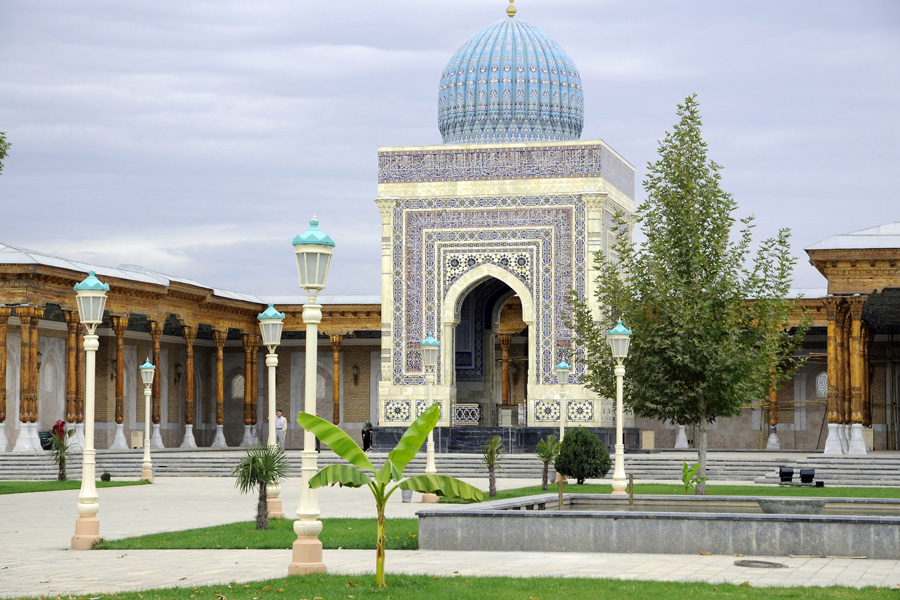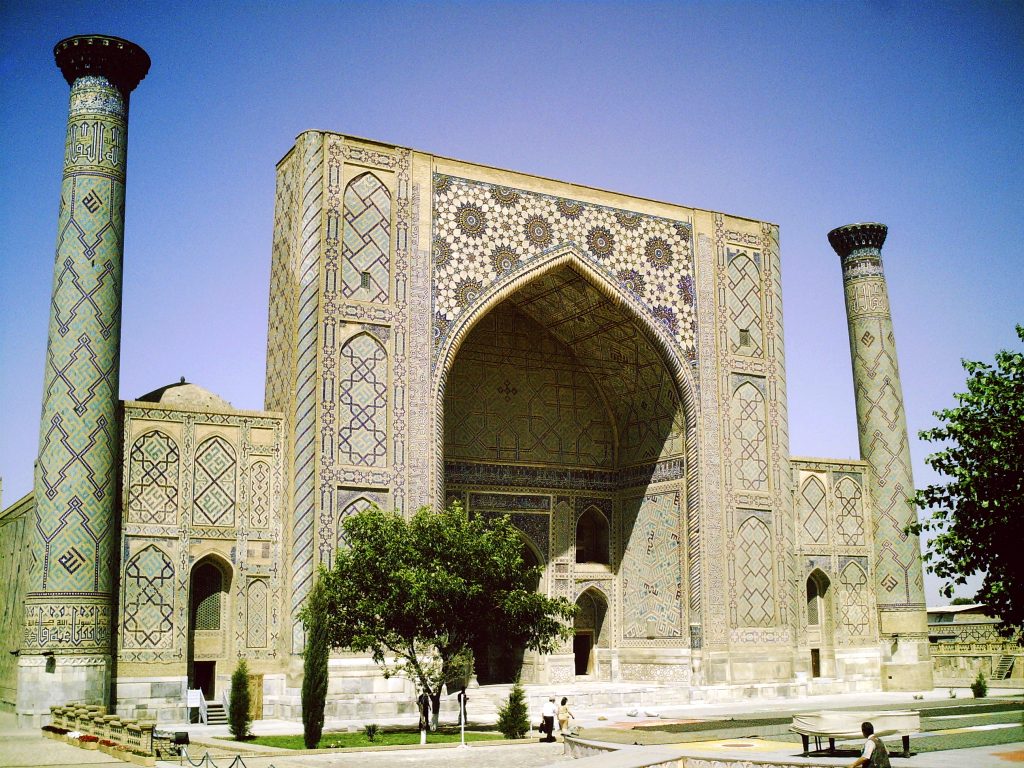Samarkand grew up as the most important commercial centre in Central Asia


When the famous Muslim traveller Ibn Battuta visited Samarkand, in Uzbekistan, in 1330, he described it as “one of the greatest and finest cities, and most perfect of them in beauty”. He was right! After Tashkent, Samarkand is the second largest city of Uzbekistan. With its 2,750 years of history, Samarkand is considered as one of the oldest cities in the world. Once, it was the capital of the powerful state Sogdiana: the old civilization and the most important province of the First Persian Empire. Surrounded by mountain ranges, deserts and steppes, Sogdiana was a very rich and fertile area thanks to irrigation.
Due to its location on the Silk Road, Samarkand became one of the most flourishing cities in Central Asia for centuries, before and after the Arab-Islamic advent. International trade was very important in Samarkand. Samarkand grew up as the most important commercial centre in Central Asia. Merchants from different empires met, traded and exchanged ideas with each other in Samarkand. No wonder that Alexander ‘the Great’ conquered this jewel in 329 BC and said: “All I have heard about the beauty of this city is true, it is just much more beautiful in reality.”
In the 8th century, Samarkand was conquered by the Arabs. During the Umayyad Dynasty, Samarkand prospered as a trading centre on the route between Baghdad and China. During the reign of the Abbasids, Samarkand became the capital of Central Asia and developed into a very important center of Islamic civilization. It is here, near Samarkand, that the great theologian Imam al-Bukhari, is buried. The darkest period in the history of Samarkand was marked by the Mongol invasion in 1220 led by Genghis Khan.
The most impressive place in Samarkand is the Registan Square, which means “a sandy place”. The Registan Square is a huge public square surrounded on three sides by religious complexes of mosques, khans (a khan is a kind of overnight stay for caravans) and madrasas. The Registan Square was rebuilt several times between 1370 and 1500.
Samarkand fell into the hands of Russian troops in 1868. In 1925, Samarkand became the capital of the Uzbek Soviet Socialist Republic, but in 1930 it was replaced by Tashkent.

COMMENTS